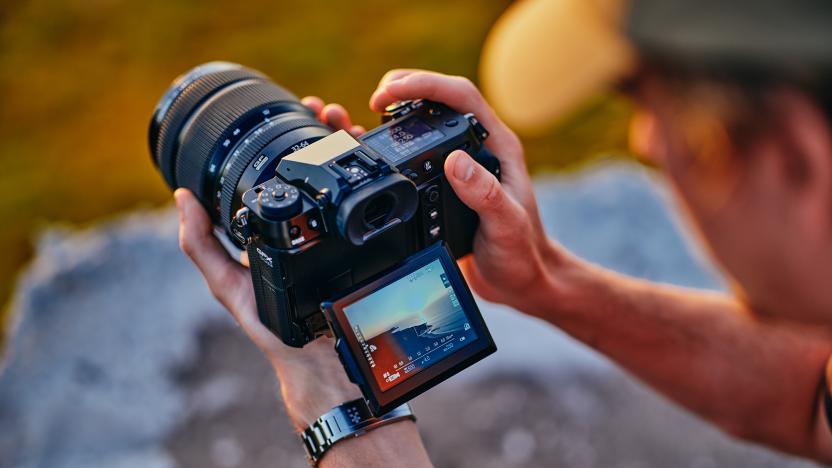Shocking Ways to Take Moon Pictures with Mirrorless Camera
Professional photographers constantly strive to capture stunning images that captivate viewers and tell compelling stories. One of the most intriguing subjects to photograph is the moon. However, capturing the moon in all its glory requires a specific set of skills, especially when using a mirrorless camera. This article will delve into the techniques and gear you need to know about how to take pictures of the moon with a mirrorless camera.

Getting the Right Gear
Choosing the Right Lens
When aiming for magnificent moon pictures, your lens choice is crucial. A super-telephoto lens is ideal for this kind of photography. Look for lenses with a focal length of at least 300mm. These lenses allow you to zoom in on the moon and capture its intricate details, from its craters to its stunning textures. Professional photographers often prefer mirrorless cameras with interchangeable lenses due to their compact size and versatility. You can read more about mirrorless cameras and their benefits here.
Sturdy Tripod
A sturdy tripod is another essential piece of equipment for moon photography. Given the long exposure times required to capture the moon's details, any camera movement can result in blurred images. Therefore, investing in a high-quality tripod is non-negotiable. Ensure it can withstand outdoor conditions and provide stable support for your mirrorless camera setup.

Mastering Camera Settings
ISO Settings
ISO settings significantly impact the quality of your moon pictures. Too high an ISO can introduce noise, while too low can result in underexposed images. Typically, an ISO setting between 100 and 400 is ideal for moon photography. These settings ensure a clean and sharp image while minimizing noise. Your camera's native ISO settings can give you better control over exposure and noise levels. For more detailed guidance on using your mirrorless camera's settings, check tips on using mirrorless cameras.
Shutter Speed
The shutter speed you choose can make or break your moon photography experience. Since the moon moves, albeit slowly, a fast shutter speed is essential to avoid motion blur. A starting point would be a shutter speed of around 1/125th of a second.
Aperture Settings
The aperture should be set to a value that balances depth of field and lens performance. An aperture ranging from f/8 to f/11 is generally recommended. These settings offer a good compromise between sharpness and depth.

Planning Your Shoot
Knowing Moon Phases
Understanding the moon phases is crucial for moon photography. A full moon is the most common phase for photography due to its brightness and visibility. However, other phases like the crescent and gibbous moon offer unique opportunities for creative shots.
Checking Weather Conditions
Clear skies are a must for moon photography. Cloudy or hazy conditions can obstruct your view of the moon and ruin your shot. Use weather apps to plan your shoot on days when the sky is clear.

Shooting Tips and Techniques
Using Manual Focus
When photographing the moon, manual focus is your best friend. The auto-focus setting may struggle with the moon's brightness and contrast, leading to out-of-focus images. Use your camera's magnification feature to focus on the moon's details manually.
Long Exposure and Bracketing
Long exposure and bracketing are advanced techniques that can enhance your moon photography. Experiment with exposure times while using a remote shutter release to avoid camera shake.
Post-Processing
Professional photographers know that capturing the image is just the first step. Post-processing allows you to enhance details, adjust brightness, and bring out the best in your moon photos. Software like Adobe Lightroom and Photoshop are invaluable tools in this regard.
Common Mistakes to Avoid
Ignoring Weather Conditions
One common mistake is not paying attention to weather forecasts. Always ensure you shoot on a clear night to get the best possible images.
Using High ISO
A high ISO setting can introduce noise and reduce the image quality. Stick to ISO settings between 100 and 400 for crisp, detailed shots.
Faqs on Moon Photography with Mirrorless Cameras
1. What is the best time to photograph the moon?
It's generally best to photograph the moon during a full moon or just before dawn when the atmosphere is clearer.
2. Do I need a special lens for moon photography?
While not strictly necessary, a super-telephoto lens with at least 300mm focal length provides the best results.
3. Can I use a smartphone with a mirrorless camera for moon photography?
While you can use remote apps, nothing beats the control and quality that professional mirrorless cameras offer. For additional insights, check the blog posts on this topic here.
As an Amazon Associate, I earn from qualifying purchases.

